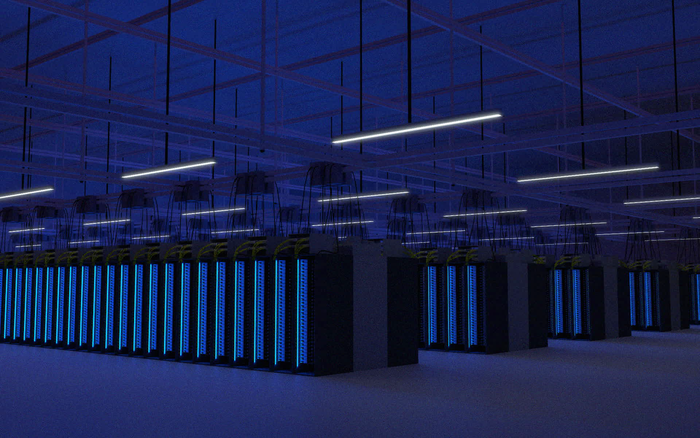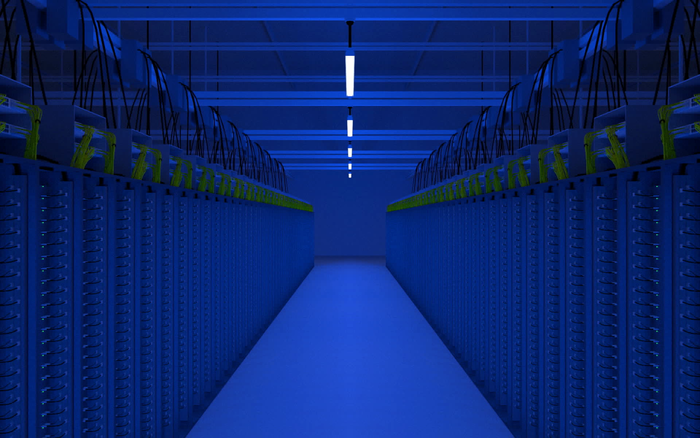Kynan Tan
November 2019
The image of the data centre calls to mind the increasing centralisation of computational power and the capacity to produce larger scales of control. While the reach and power of computational systems increase, knowledge about these systems is carefully restricted, contributing to their mystery. The vague perceptions we have of these systems give rise to a feeling of unknowing, of an invisible power that is indifferent to us, and of operations that treat individuals as components (bits of data) in larger systems of capture, tracking, and control.
Data centres are geopolitically charged – for example, we can think of their placement in particular climates and within the jurisdictions of specific governments. Yet their actual infrastructure, location, and sheer physicality remain largely out of sight. They are tightly securitised: massive concrete buildings with no windows. Their physical architecture realises the ‘black box’ engineering approach of an opaque system, operating with inputs and outputs but with little public access to internal functioning and processes.

Utilising huge amounts of energy to power and cool hundreds of rack-mounted servers, data centres are engineered for redundancy, incorporating various backups to ensure that the facility (and ‘the cloud’) stays online . They are typically built in remote areas outside of cities and towns where the land, electricity, and labour are relatively cheap (Mosco 2015). As such, data centres inhabit ‘indistinct spatialities’ (Mackenzie 2010, 13) – they are responsible for the structure, organisation, and efficacy of a huge proportion of digital activity, yet spatially dislocated from what (and who) they effect.
Tung-Hui Hu (2015) explains that ‘for data to be placeless and borderless, data must first be displaced; for the cloud to appear decentralized, its data must first be centralized’ (79). He argues that data centres produce ‘a layer of abstraction that masks the physical infrastructure of data storage. Paradoxically, then, data centres exist at the border between the dematerialized space of data and the resolutely physical buildings they occupy’ (81). Data centres facilitate a particular kind of decentralisation and displacement. They evade engagement while simultaneously being a key component in all manner of everyday online activities such as email, banking, social media, and so on.

My work Polymorphism (Data Centre Simulation) presents a simulation of a data centre interior that has been constructed using 3D modelling software. It presents some of the hidden, internal workings of the ‘black box’ of commercial data centres in order to generate a work that is visual, sonic, and affective. Despite multiple attempts, due to security restrictions and tech company policy, I was not able to gain access to a data centre to view the subject matter firsthand, or to acquire comprehensive information pertaining to the facilities’ design, construction, or usage. The work is therefore informed by images, video, and sound recordings of existing data centres of large organisations such as Google, Facebook, and CERN that have been made available via the internet.
The server racks, ethernet cables, LEDs, power, neon lights, surveillance cameras, and other infrastructure that are portrayed in the simulation make up the major components of an actual, active data centre. Similar to the real-world equivalent, the servers are ‘headless’ – there are no screens or monitors, nor any visual feedback to indicate what processes are taking place. The network cables and surveillance cameras in the space indicate connectivity to the outside world: the former to networked data traffic, the latter to the watchful eyes of the facility’s gatekeepers.
The sound component of the work attempts to reproduce the ambience of the physically operational versions of this space – the sound of hundreds of servers and fans along with cooling infrastructure, generated through digital audio synthesis. This culminates in a broad spectrum of noise: the low rumbles of large machines and the rapid blips of switches pairing with the flickering of LED lights to visually signal computational activity. The sound is suggestive of the massive scale of energy and mechanical power this infrastructure deploys: the depicted data centre is not a static archive but is rather a hive of constant activity – the goal of continual, 24/7 operation requiring perpetual action and energy usage.

Polymorphism explores the many conflicts that I have outlined above concerning the materialities and displaced locations of data and algorithmic processes. By creating computer-generated imagery and sound of what is an existing yet hidden space, the work creates a multisensory simulation of the interior of one kind of ‘black boxing’ that takes place in contemporary computation.
Polymorphism creates a space that is capable of exploring the capacities of data to affect us and our affective relations with the invisibility of data processes. The work raises questions such as: Who controls and benefits from these infrastructures? What kinds of power do data centres produce? How can we know the operations of algorithmic power that are operating invisibly? How do we these facilities amplify inequalities of power?
Works Cited
Hu, Tung-Hui. 2015. A Prehistory of the Cloud. Cambridge, Mass.: MIT Press.
Mackenzie, Adrian. 2010. Wirelessness: Radical Empiricism in Network Cultures. Cambridge, Mass.; London: MIT Press.
Mosco, Vincent. 2015. To the Cloud: Big Data in a Turbulent World. London: Routledge.
Rossiter, Ned. 2016. Software, Infrastructure, Labor: A Media Theory of Logistical Nightmares. New York: Routledge.